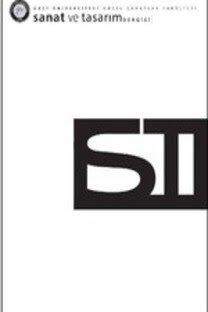Yeni Normal Paradigmasında Yenilik ve Ürün Tasarımı
Bu çalımanın amacı, Yeni Normal paradigması ııında, deien yenilik kavramınıgüncel i modelleri açısından incelemektir. Ekonomide konjüktürel deimeler yeni imodellerinin çıkmasına sebep olmaktadır. Baarılı olan modeller yeni paradigmadeiimlerine karı yaamlarını sürdürmektedir. Yeni normal paradigmatik bir deiimolarak yeni modellerin ortaya çıkmasına sebep olmutur. Bu balamda, öncelikle YeniNormal kavramının dinamikleri tartıılacak, ön plana çıkan üç yönetimsel modelin(Karaoke Kapitalizmi, Acayip irket ve Spagetti Organizasyonu) Yeni Normal ileuyumluluu belirlenecektir. Çalımanın ilerleyen bölümlerinde Yeni Normalin en önemlisöylemlerinden birisi olan yenilik kavramı deien doası açısından ele alınacak, ürünfarklılaması (kalite, tasarım, fonksiyoni promosyon ve edinim) için için tüketiciye yakınya da tüketiciyi de kapsayan yenilik modellerinde ürün tasarımı kavramının rolütartıılacaktır. Çalıma boyunca firmaların tasarım sınırlarının bilgi kanallarına eriim veelde edilen bilginin ürüne dönütürme ile kabiliyet açısından belirlenebilecei önesürülüp bilginin kaynaı olarak pazardaki talep ön plana çıkarılacaktır
Anahtar Kelimeler:
-
___
- Ambler, Tim, Employee-based Brand Equity, Person Education Limited, Harlow, 2003.
- Ate, Rauf, Yeni Normal, Sistem Yayıncılık, stanbul, 2005.
- Chan, Kim, Renée Mauborgne, Blue Ocean Strategy, Harvard Business School Press, Massachusetts, 2005.
- Chesbrough, Henry, Open Innovation: The New Imperative for Creating and Profiting From Technology, Harvard Business School Press, Massachusetts, 2003.
- Csikszentmihalyi, Mihaly, Creativity: Flow and the Psychology of Discovery and Invention, Harper Perennial, New York, 1996.
- D’aveni, Richard, Hypercompetition, The Free Press, New York, 1994.
- DEACA, The Economic Effects of Design Report, DEACA, Copenhagen, ww.ebst.dk/file/1924/the_economic_effects_of_designn.pdf, 28 Mart 2012. 2003:3-4, (Eriim)
- Ertuna, Özer, “Krizden Alınacak Dersler Yeni Bir Fırsat mı?”, MUFAD Journal, sayı 43, 2009: 5-43.
- Florida, Richard, The Rise of the Creative Class: And How It's Transforming Work, Leisure, Community and Everyday Life, Perseus Book Group, New York, 2002.
- Foss, Nicola, “Selective Intervention and Internal Hybrids: Interpreting and Learning from the Rise and Decline of the Oticon Spaghetti Organization”, Organization Science, cilt 14, sayı 3, 2003: 331-349.
- Heilbroner, Robert L., ktisat Düünürleri, Dost Kitapevi, Ankara, 2008.
- Hertenstein, Julie, Marjorie Platt, Robert Veryzer, “The Impact of Industrial Design Effectiveness on Corporate Financial Performance”, Product Innovation Management, cilt 22, sayı 1, 2005:3-21.
- Hill, Dan, Emotionomics, Kogan Page Ltd: Londra, 2010.
- Howe, Jeff, Crowdsourcing, Crown Publising, New York, 2008.
- Hudson, Larry, Nabil Sakkab, “Connect and Develop: Inside Procter & Gamble’s New Model for Innovation”, Harvard Business Review, sayı Mart, 2006: 1-10.
- Kohli, Ajay, Bernard Jaworski, “Market Orientation: The Construct, Research Propositions, and Managerial Implications”, Journal of Marketing, cilt 54, sayı 2, 1990: 1-18.
- Kolind, Lars, The Second Cycle: Wining The War Against Bureaucracy, Wharton Schoool Publising, New Jersey, 2006.
- Kotler, Philip, Alexander Rath, “Design: A Powerful But Neglected Strategic Tool”, Journal of Business Strategy, cilt 5, sayı 2, 1984: 16 – 21.
- Kotler, Philip, Kotler on Marketing, The Free Press, New York, 1999.
- Kotler, Philip, Ten Deadly Marketing Sins, Wiley, New Jersey, 2004.
- Lockwood, Thomas, “Transition: How to Become a More Design- Minded Organization”, Design Management Review, cilt 20, sayı 3, 2009: 27-37.
- McNamee, Roger, The New Normal, The Penguin Group, New York, 2004.
- Meadows, Dennis, “Estimate Accuracy and Project Selection Models in Industrial Research”, Industrial Management Review, sayı 9, 1968: 105-119.
- Nambisan, Stish, Mohanbir Sawhney, “A Buyer’s Guide to the Innovation Bazaar”, Harvard Business Review, sayı Haziran, 2007:109- 118.
- Narver, John, Stanley Slater, “The Effect of a Market Orientation on Business Profitability”, Journal of Marketing, cilt 54, sayı 4, 1990:20- 35.
- NZIER, Building a Case for Added Value Through Design Report, NZIER, www.nzte.govt.nz/common/files/design-report-final.pdf., 30 Mart 2012. Wellington, 2003 (Eriim)
- Peplow, Martin, “Design Acceptance”, The Design Method, haz. S A Gregory, Butterworth, London, 1960.
- Peters, Tom, Re-imagine, Dorling Kindersley Ltd, Londra, 2003
- Prahalad, Coimbatore Krishnarao, Venkat Ramaswamy, The Future of Competition: Co-creating Unique Value with Consumers, Harvard Business School Press, Massachusetts, 2004.
- Porter, Michael, “Changing Patterns of International Competition”, California Management Review, cilt 28, sayı 2, 1986: 9-40.
- Ridderstråle, Jonas, Kjell Nordström, Funky Business, Bookhouse Publising Ltd., Stockholm, 2002.
- Ridderstråle, Jonas, Kjell Nordström, Karaoke Capitalism, Bookhouse Publising Ltd., Stockholm, 2004.
- Rivkin, Steve, Jack Trout, Differentiate or Die, Wiley, New Jersey, 2003.
- Roald, Jo Eikeland, Design Leadership, 5th NordCode Seminar: “Connecting fields”, Oslo, 2006.
- Schumpeter, Joseph, Capitalism, Socialism and Democracy, Harper, New York, 1943.
- Tapscott, Don, The Naked Corporation, Free Press, New York, 2003.
- Touraine, Alain, Return of the Actor: Social Theory in Postindustrial Society, University of Minnesota Press, Minneapolis, 1998.
- UK Design Council, Design in Britain 2005-06 Report, Design Council, Londra, 2007:7.
- Utterback, James, “The Process of Innovation: A Study of the Origination and Development of Ideas for New Scientific Instruments”, IEEE Transactions on Engineering Management, cilt 18, sayı 4, 1971:124-131.
- Verganti, Roberto, “Design, Meanings, and Radical Innovation: A Metamodel and a Research Agenda”, Journal of Innovation Management, sayı 25, 2008: 436-456.
- Von Hippel, Eric. “Successful Industrial Products from Customer Ideas”, Journal of Marketing, sayı 42(1), 1978: 39-49.
- ISSN: 1308-2264
- Yayın Aralığı: Yılda 2 Sayı
- Başlangıç: 2015
- Yayıncı: Ankara Hacı Bayram Veli Üniversitesi
Sayıdaki Diğer Makaleler
Seramik ve Transfer Baskı: 1750-1900
Görsel Kültürün Çağdaş Sanat Uygulamalarında Sorgulanması
Mekanik Üretim Süreci, Sanatta Değişim ve Aura
ÇAĞATAY İNAM KARAHAN, Can KARAHAN
Yeni Normal Paradigmasında Yenilik ve Ürün Tasarımı
Postmodern Süreçte Sanatın Değişen Anlamı
1950 Sonrası Sanat Akımlarının Gelişiminde Robert Rauschenberg'in Etkileri
